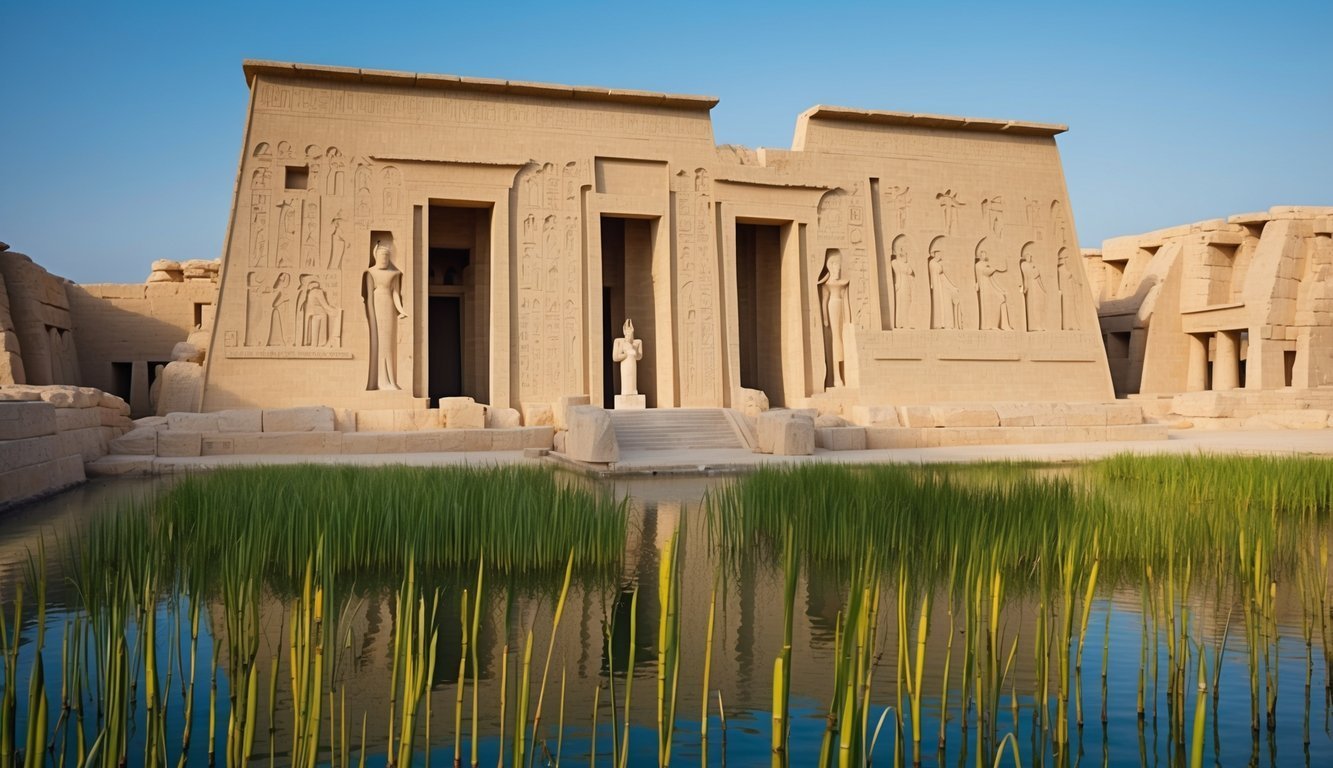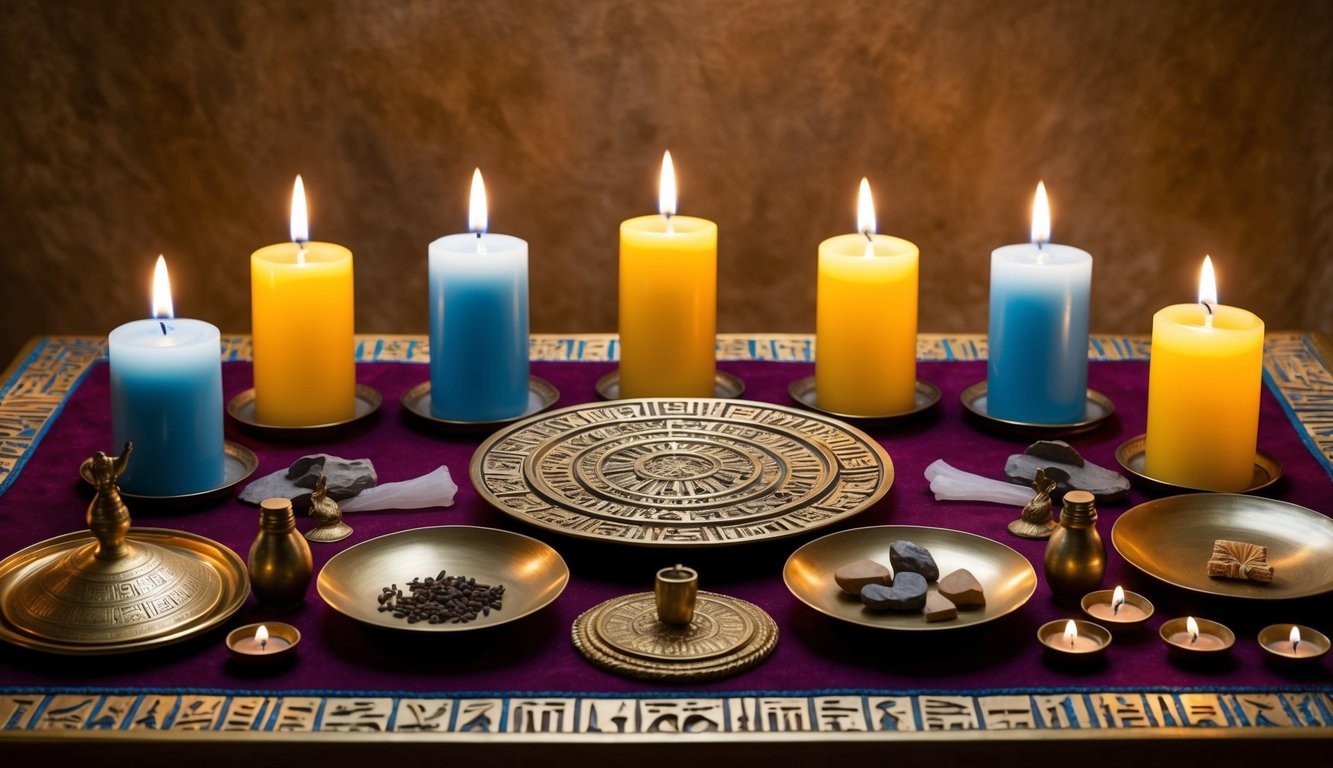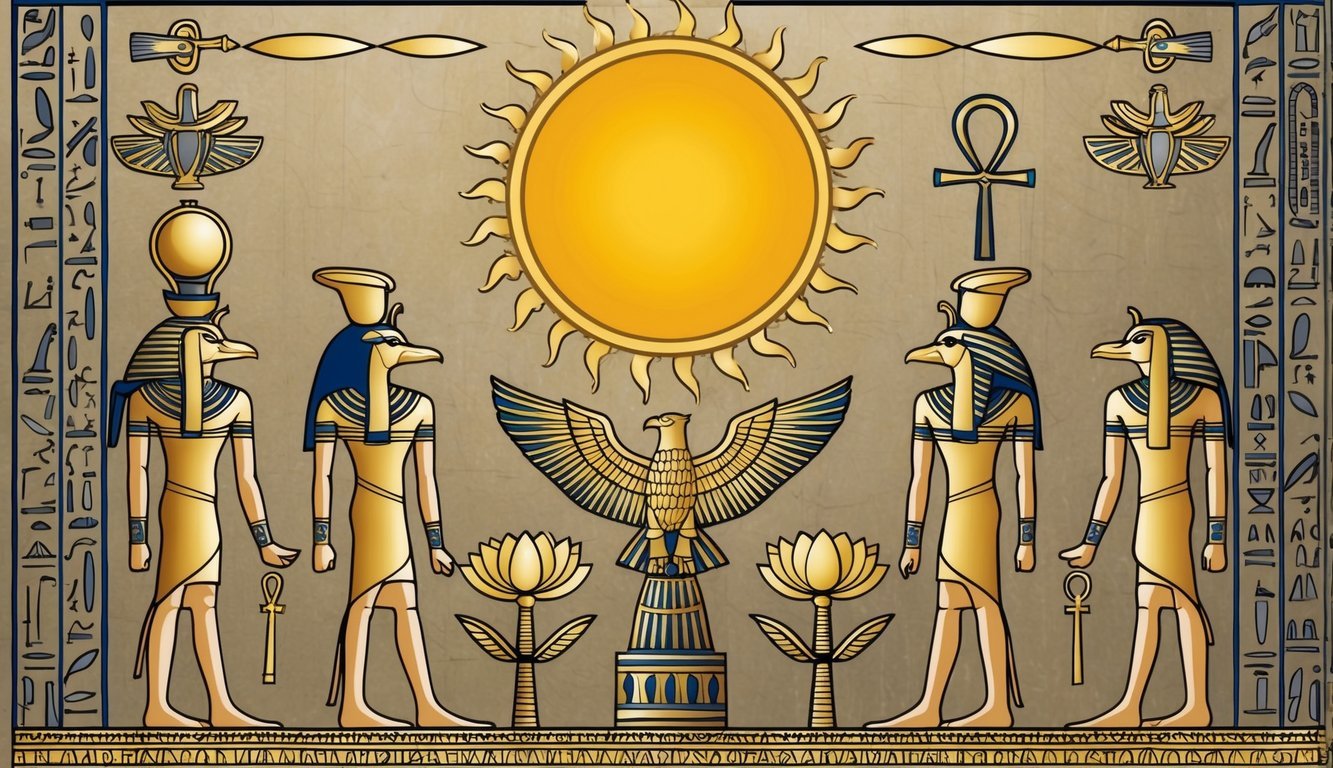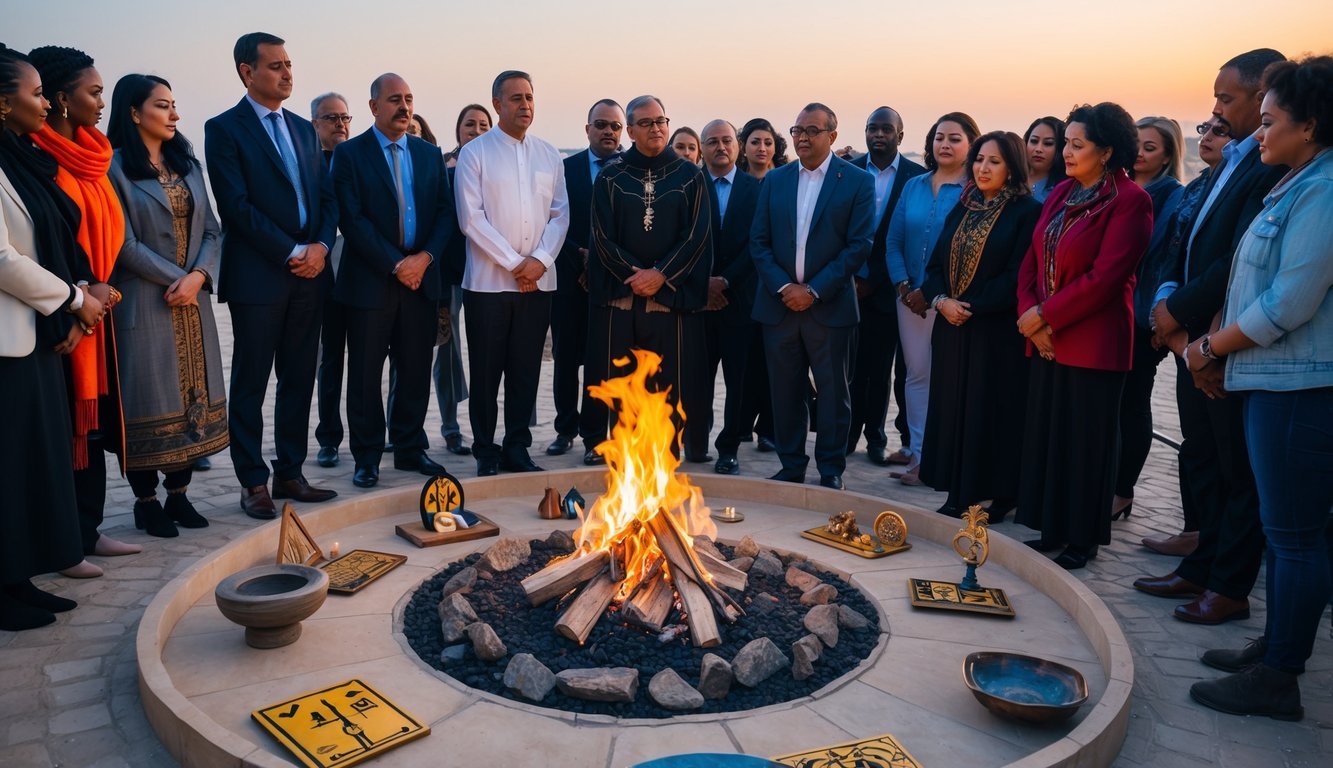PsychNewsDaily Publishers
100 Summit Drive
Burlington, MA, 01803
Telephone: (320) 349-2484
PsychNewsDaily Publishers
100 Summit Drive
Burlington, MA, 01803
Telephone: (320) 349-2484
Kemetic spirituality, rooted in ancient Egypt (Kemet), emphasizes the principles of Ma’at, the worship of numerous deities, and the significance of rituals and symbols in daily life.

Kemetic spirituality has deep roots in ancient Egypt, often known as Kemet. This rich tradition has grown and changed over time, influenced by culture, history, and belief. Let’s explore where it all began and how it evolved.
Kemet, the ancient name for Egypt, emerged as a cultural and spiritual hub thousands of years ago. The Egyptians worshiped a pantheon of gods, each representing various aspects of life. From Ra, the sun god, to Osiris, the god of the afterlife, these deities shaped daily life and society.
I often think about how these gods weren’t just figures of worship but also symbols of nature. The Nile wasn’t just a river; it was life itself. Temples were built not just for praying but as places of learning and community. It’s incredible how the myths and stories served as moral lessons for the people, reflecting their values and beliefs.
As time moved on, the belief systems of Kemet faced many challenges. The rise of different empires and religions brought changes. But Kemetic spirituality didn’t disappear. It adapted, weaving itself into other belief systems.
Today, many people, especially those of African descent, look to these ancient practices for guidance. They seek truth and connection through rituals, meditation, and nature. I wonder how our modern understanding of spirituality still echoes the teachings from ancient Kemet. It seems there’s something timeless about the longing for understanding, creation, and cosmic harmony that connects us to our ancestors.

In Kemetic spirituality, two core ideas stand out: the concept of Ma’at and the nature of divinity. These ideas help shape the beliefs and practices that guide followers in their lives and interactions with the universe.
Ma’at is more than just a word; it’s a way of life. It embodies truth, balance, justice, and order. I think about how important it is for us to keep things in harmony, right? When the universe is in balance, we experience peace both internally and externally.
In ancient times, Ma’at was seen as a guiding principle for living. It’s like a moral compass, encouraging people to act justly and honor the interconnectedness of all life. Without Ma’at, chaos could creep in, and I wonder how many of us feel that chaos in the world today. The idea of Ma’at reminds us that our choices shape not just our lives but the fabric of reality itself.
When it comes to divinity, Kemetic belief can be a bit complex. On one hand, there’s the idea of the One God, reflecting a form of monotheism. Yet, there are many deities, or neteru, each representing different aspects of life and the universe. I find it fascinating how these gods encapsulate different powers and forces. For instance, gods like Osiris and Isis symbolize life and rebirth, which are so central to human experience.
So, which is it, right? One God or many? I think it’s about perspective. Some see these deities as different expressions of a single source, a divine unity amid diversity. It makes me think about how we perceive the divine in our own lives, don’t you think? Each belief offers its own unique lens, helping us to explore our purpose and place in the universe.

Rituals and spiritual practices in Kemetic spirituality help us connect with ancient beliefs. They guide us in creating spaces that reflect our inner selves while honoring the divine.
Setting up a personal shrine can be such a meaningful experience. I find it’s a reflection of my spiritual journey. You can start by choosing a quiet spot in your home. It could be a corner of a room or even a small table.
I like to include a few key elements. An ankh symbolizes life, while a feather often represents truth and balance. The djed, representing stability, is also a great addition. It feels grounding.
Next, I consider what offerings to place. Fresh flowers, fruits, or special snacks can be perfect. They feel like gifts to the divine. Honestly, I love arranging everything with intention. It makes the space feel alive, and I really connect with my spirituality in that moment.
Offerings hold a special place in Kemetic rituals. They’re not just about food; they’re ways of showing gratitude. I believe they symbolize a connection between the physical and the spiritual.
Using symbols is equally important. Each symbol tells a story or holds deep meaning. The presence of the ankh, for example, can remind us of life’s richness. The feather of Ma’at helps us reflect on our truth.
Food offerings like bread or wine can nourish the spirit. I always feel a sense of community when sharing these moments with friends or family. When I arrange my offerings, it feels like I’m inviting blessings into my life and honoring traditions that have lasted for ages. It’s like joining a link in a beautiful chain of spiritual practices.

In the rich world of Kemetic spirituality, deities play crucial roles. Each one represents different aspects of life, nature, and the universe. Symbols linked to these gods and goddesses deepen the meaning of their influence and teachings.
I find it fascinating how Egyptian deities are like characters in a story, each with their own traits and responsibilities. For example, Ra is the sun god, often seen as the source of light and life. Then there’s Isis, known for her wisdom and magical skills. She’s not just a mother figure but a protector of the weak.
Osiris, the god of the afterlife, has a lot of symbolism around resurrection. When I think of him, I can’t help but admire how he represents the cycle of life and death. And let’s not forget Sekhmet, the fierce lioness goddess, who embodies both destruction and healing. These characters interact in myths that explain the world around us.
Symbols in Kemetic belief hold loads of meaning. For instance, the ankh is often seen as a symbol of life. I wonder how people back then must have felt, carrying such a powerful sign. The Eye of Horus represents protection and royal power. It’s amazing how these symbols still resonate today.
Maat, representing truth and balance, is both a concept and a goddess. Her feathers weigh against the heart in the afterlife, deciding one’s fate. Each symbol reflects the divine aspects of the deities, embodying their presence in everyday life. I think these symbols help connect the worshippers to something greater, to the universe and beyond.

When diving into Kemetic spirituality, there are plenty of questions that pop up. From its main principles to the key figures, it can feel a bit mysterious. Let’s explore some common inquiries to shed some light on this fascinating topic.
The seven principles are a big deal in Kemetic spirituality. They guide how folks believe and act. These principles include concepts like harmony and balance, and they aim to encourage living in alignment with natural laws. I wonder if thinking about these principles can help us with personal growth.
In Kemetic thought, there isn’t just one main God. Instead, many gods and goddesses play vital roles. Some of the most known are Ra, the sun god, and Osiris, who is connected to the afterlife. Each one has their own stories and attributes that reflect various life aspects.
Kemetic gods are important because they represent different natural forces and concepts. For example, Isis is seen as a protector and mother figure, while Set represents chaos and disorder. Each god serves as a symbol for various facets of life, showing how interconnected everything is.
One clear difference is that Kemetic spirituality focuses more on a polytheistic view, where many gods interact with humans and nature. In contrast, Christianity is usually monotheistic, believing in one God. There’s also a strong emphasis on the cycle of life and rebirth in Kemetic beliefs, which differs from Christian views on the afterlife.
Yeah, absolutely! It might take some time to really get into it, but it’s totally approachable. There’s no need for a background in ancient history to start exploring. Many people find that personal experience is a big part of the journey. It’s about feeling connected with what resonates.
Kemet is the ancient name for Egypt, and it means “the black land,” referring to the fertile soil around the Nile River.
When folks talk about Kemet in relation to the Bible, they’re often referring to the powerful history and spiritual practices that originated from that region. That connection can really deepen the understanding of both cultures.